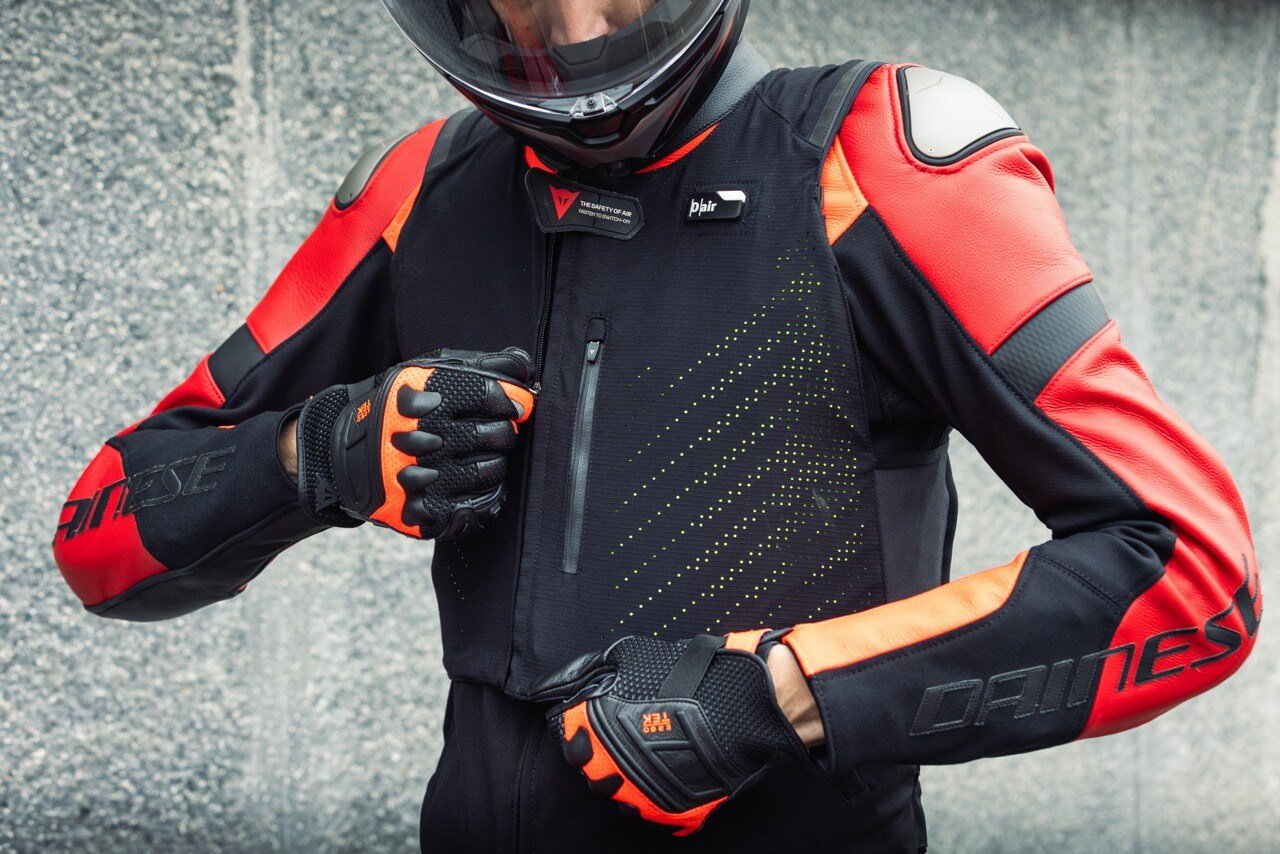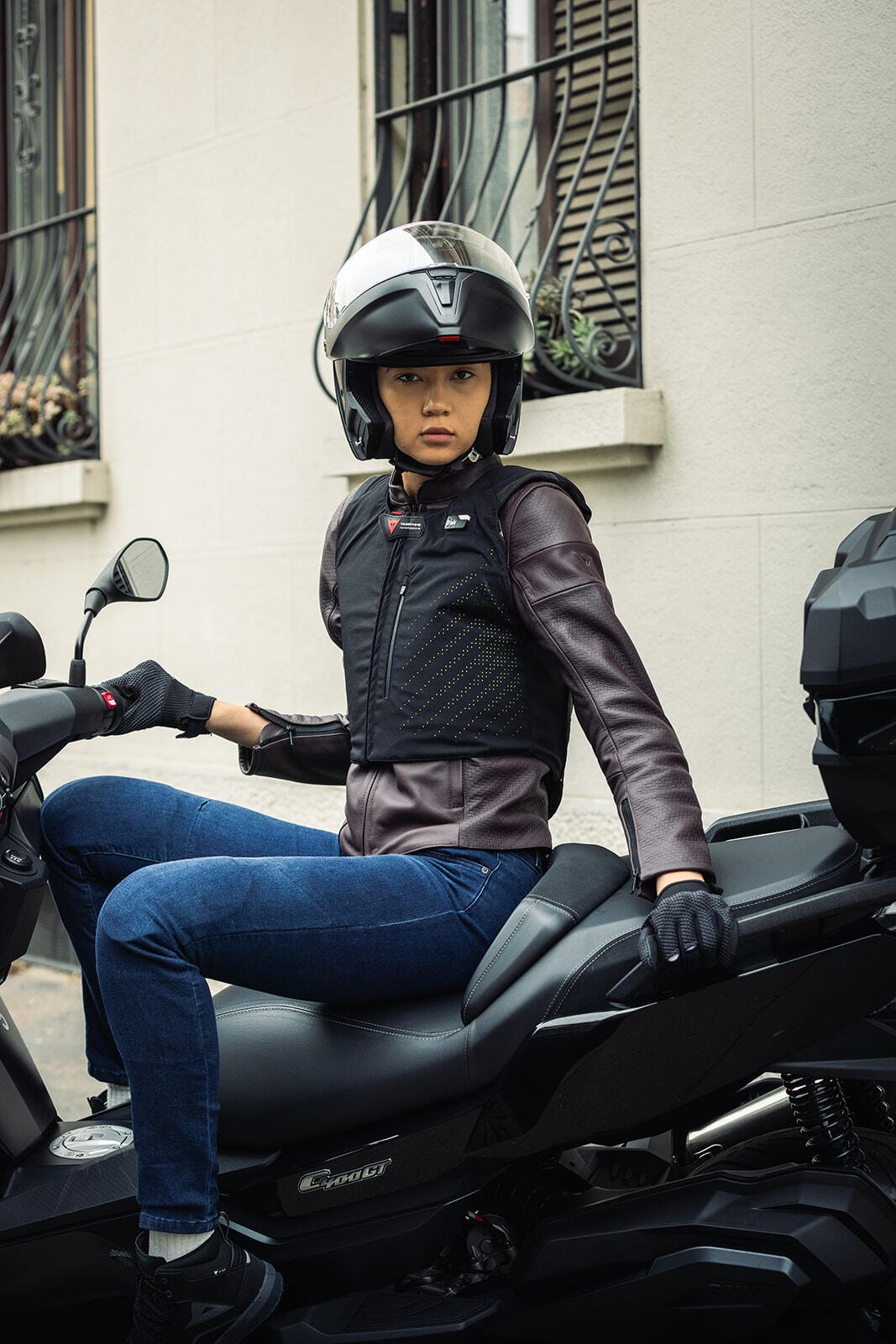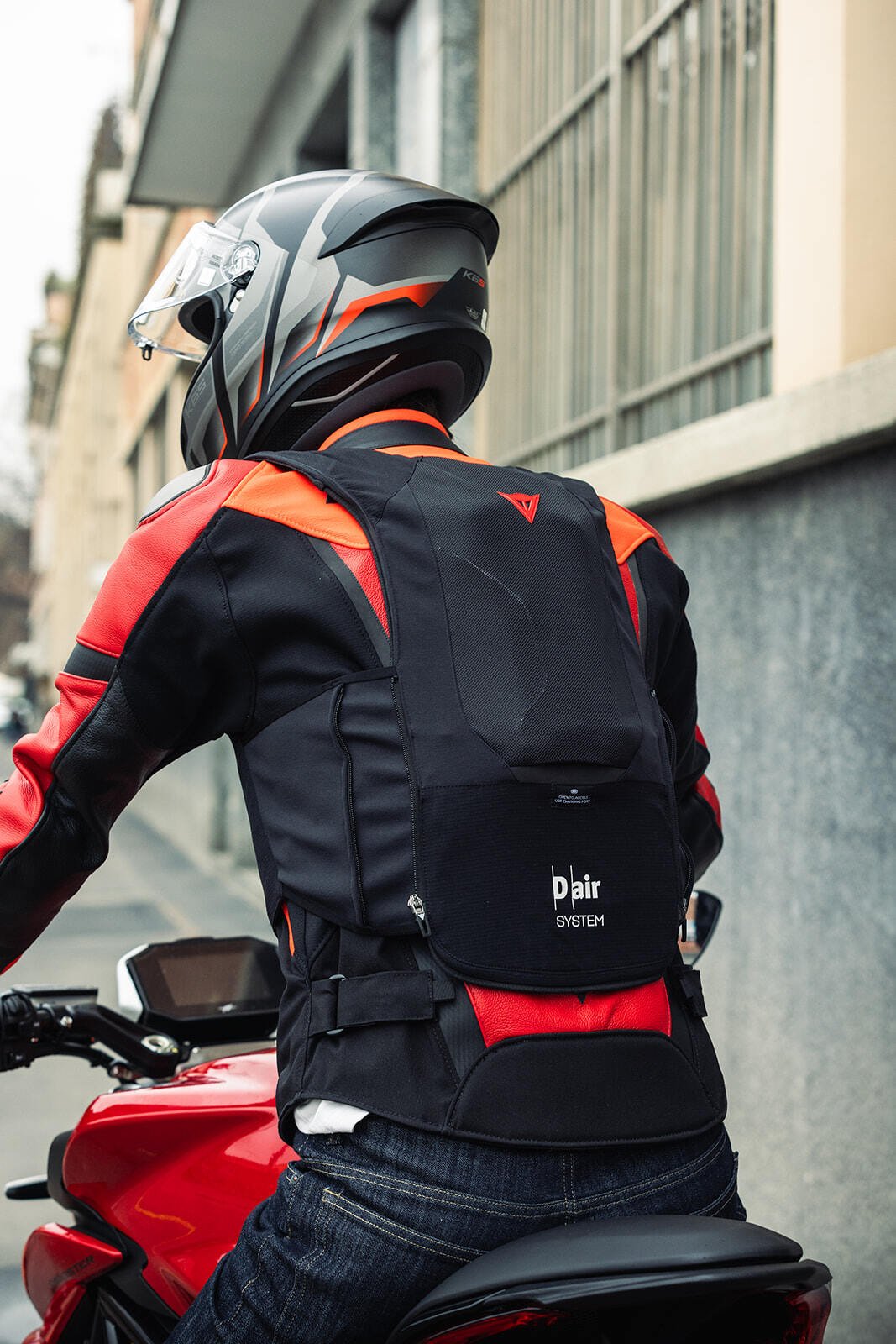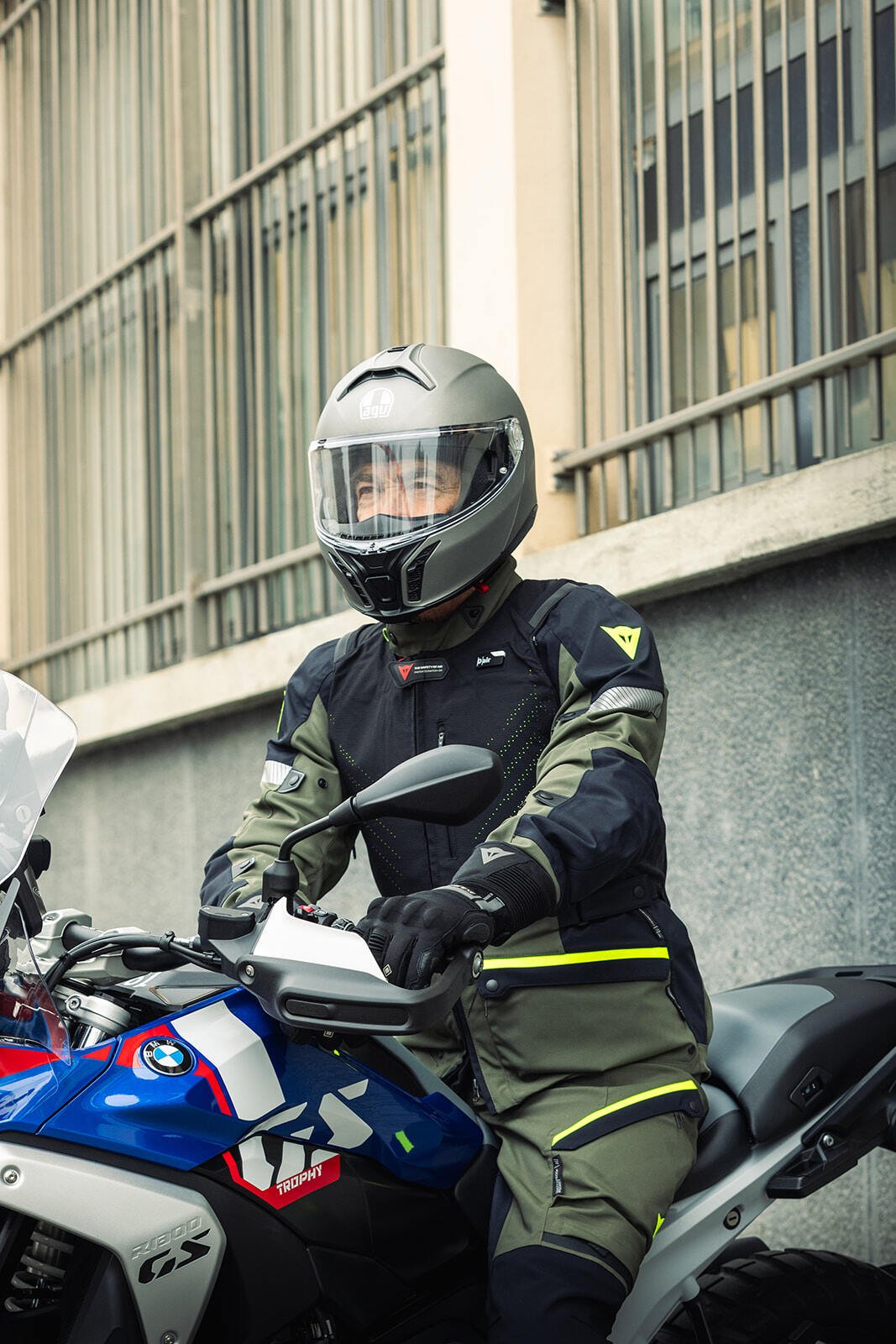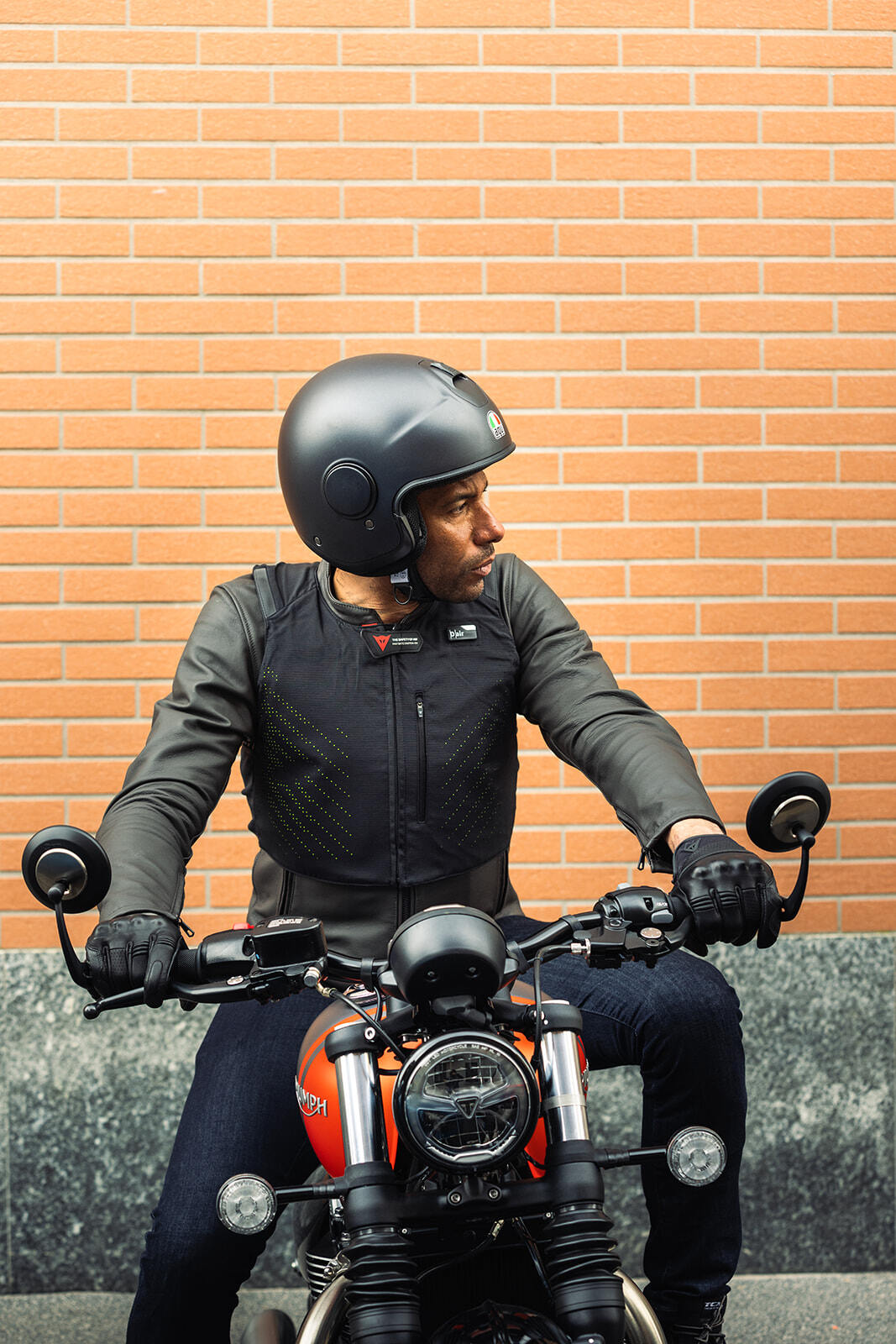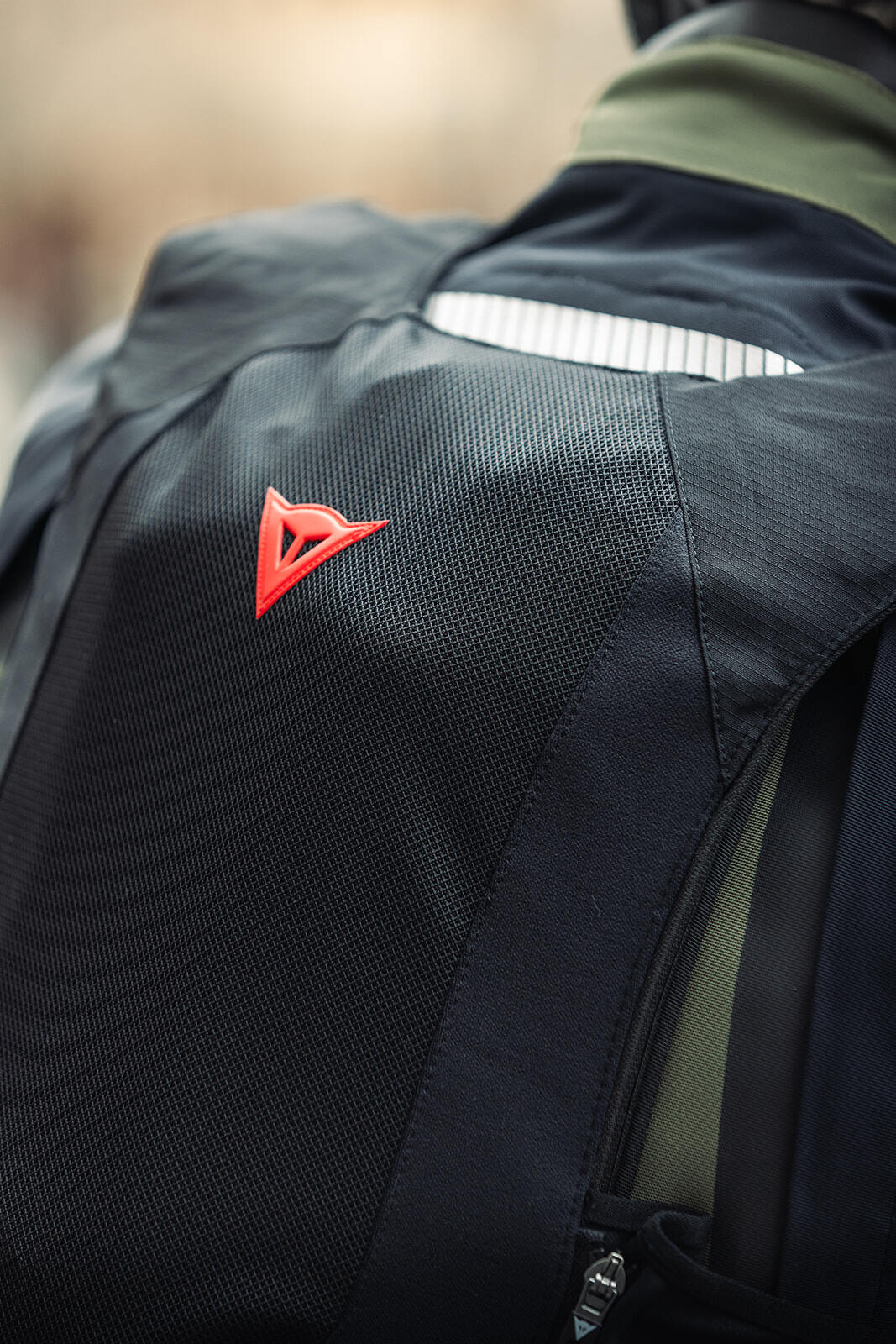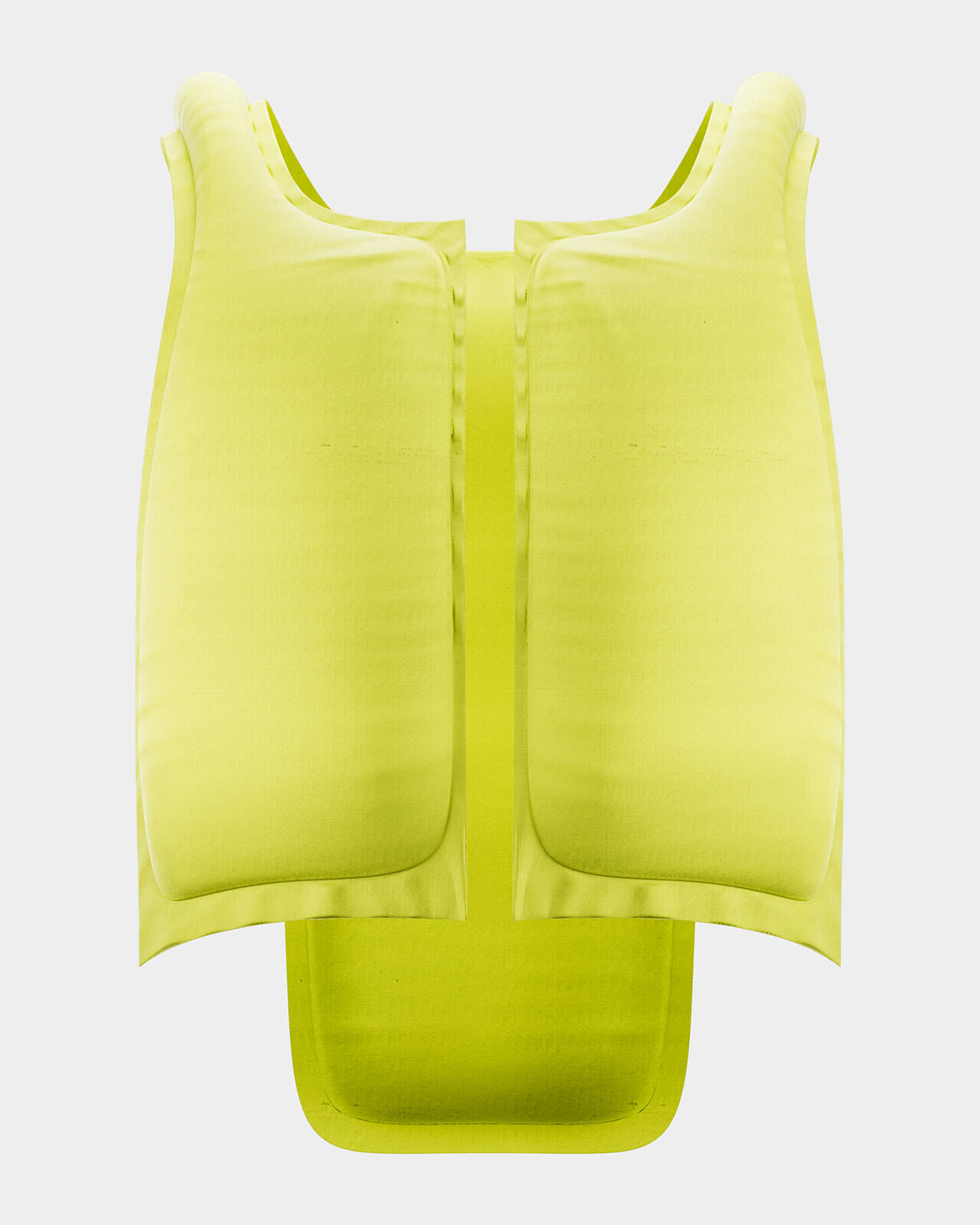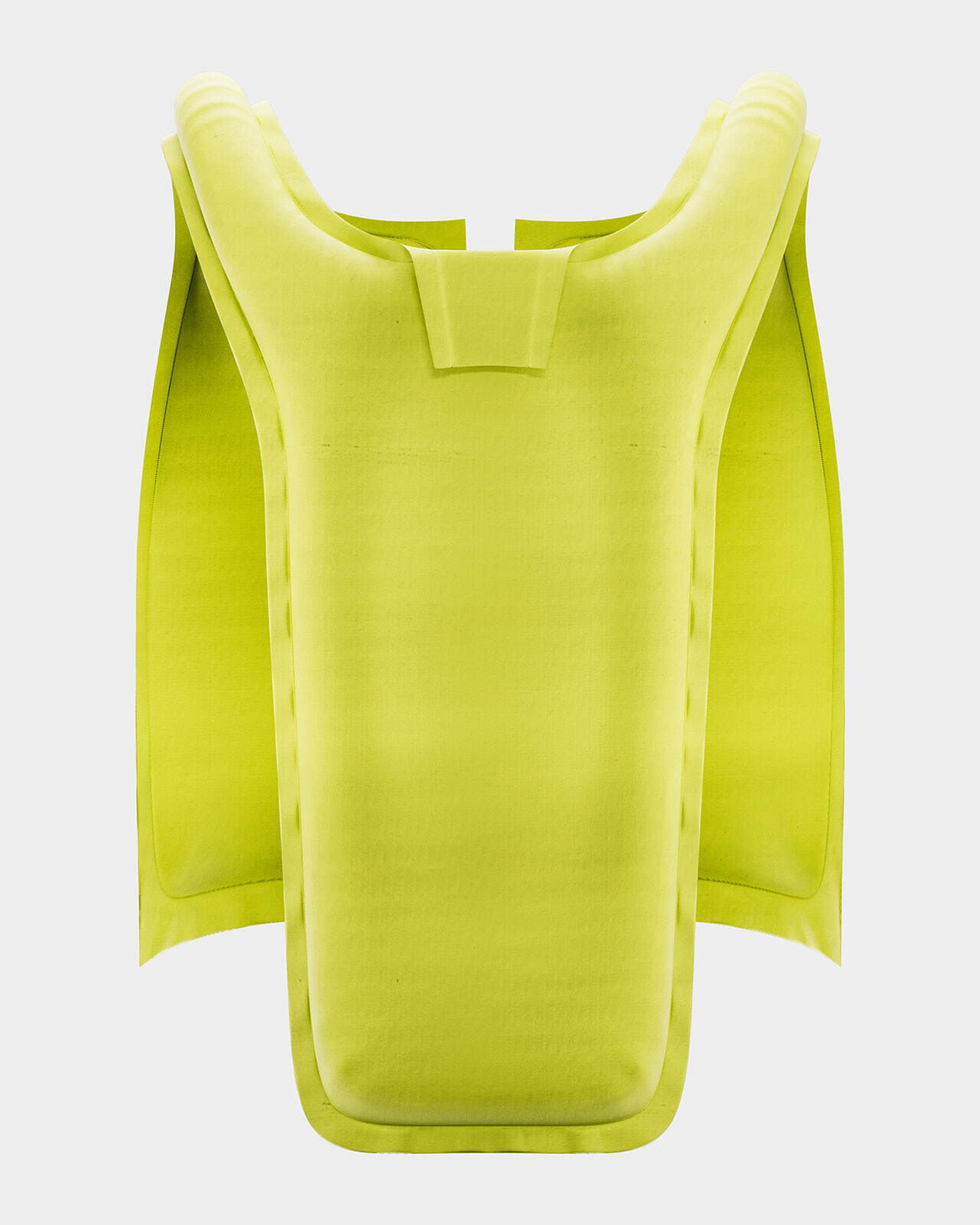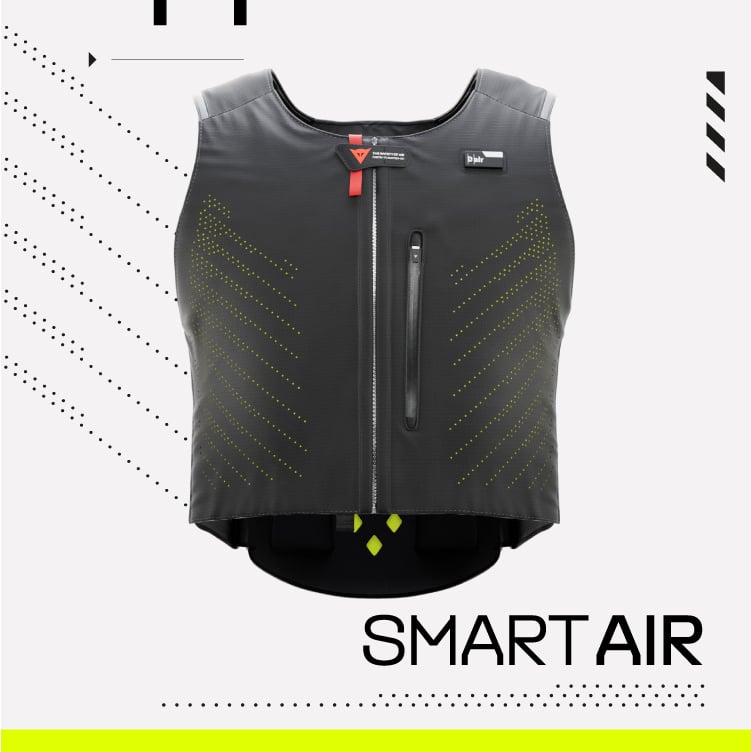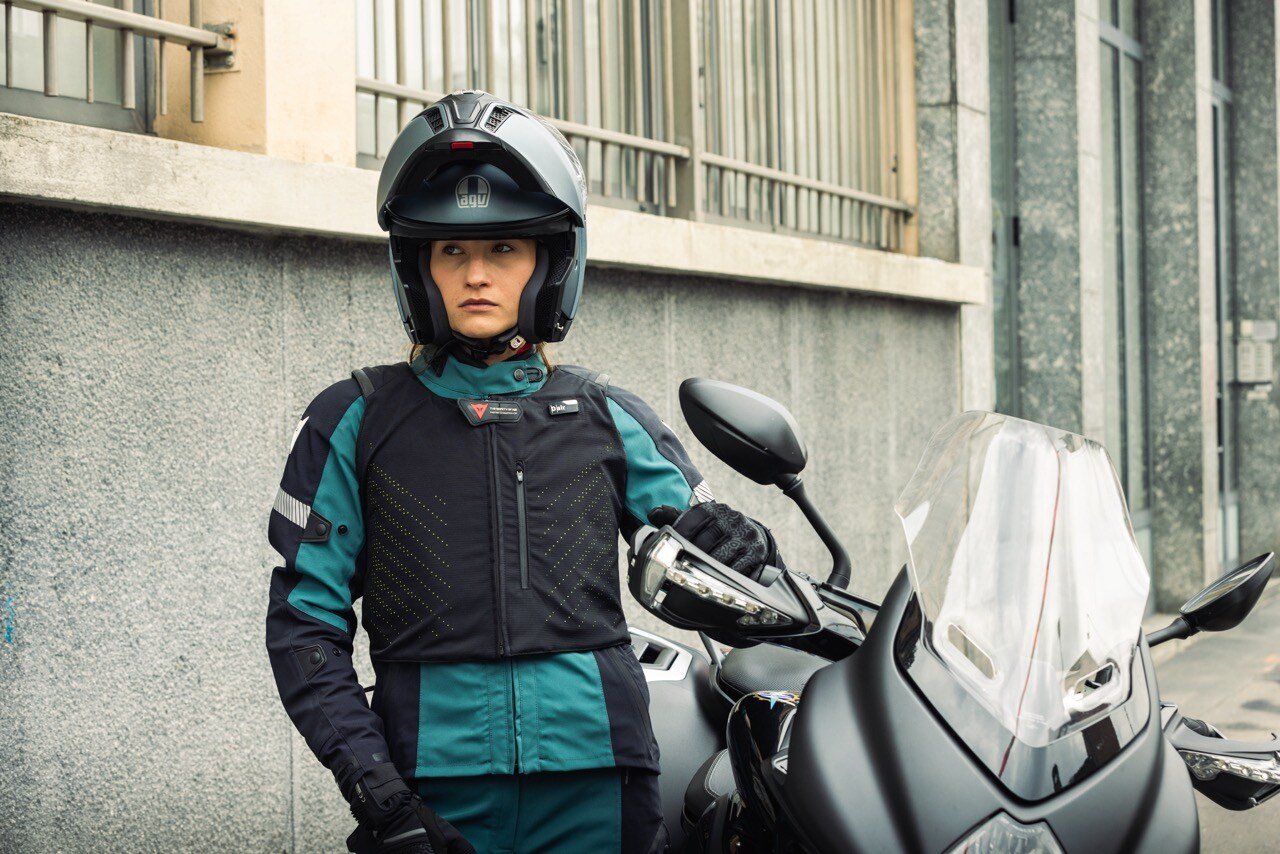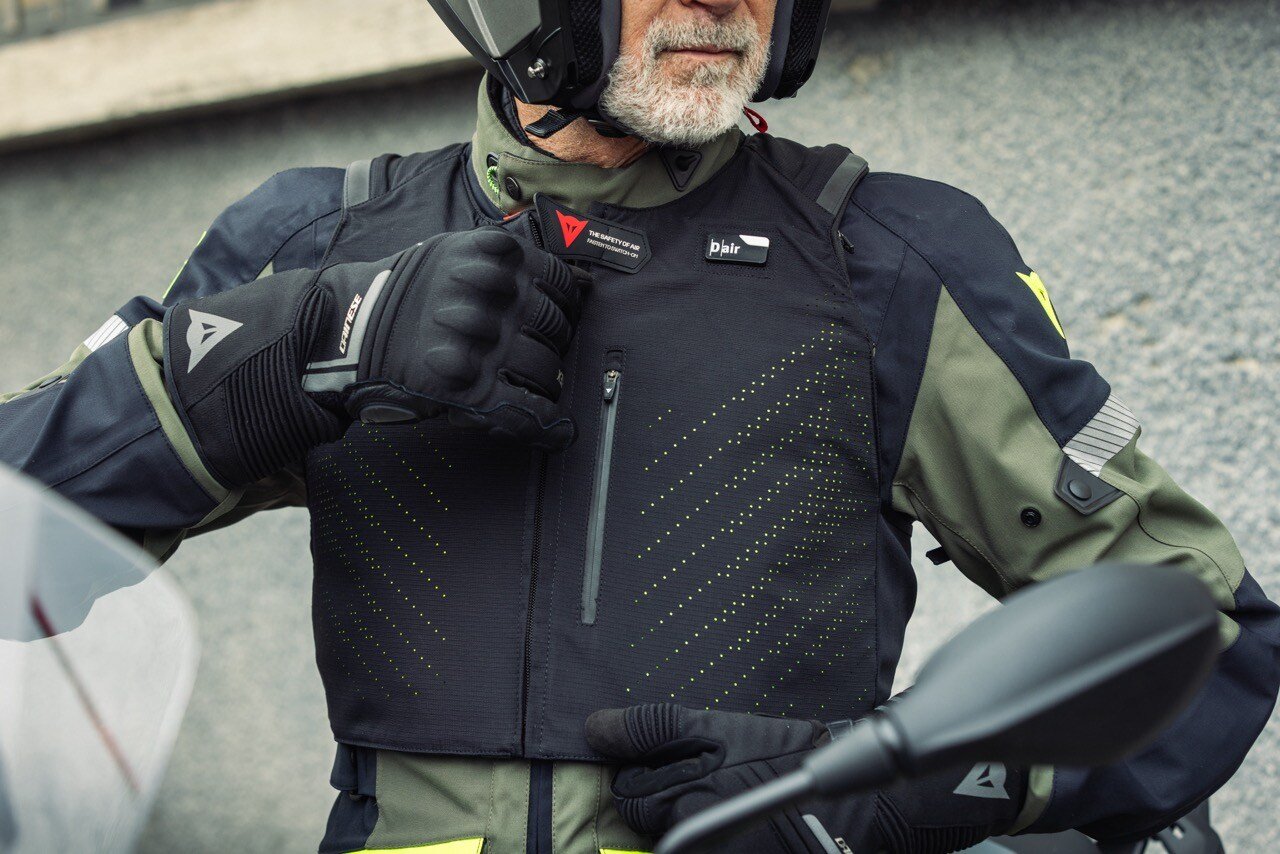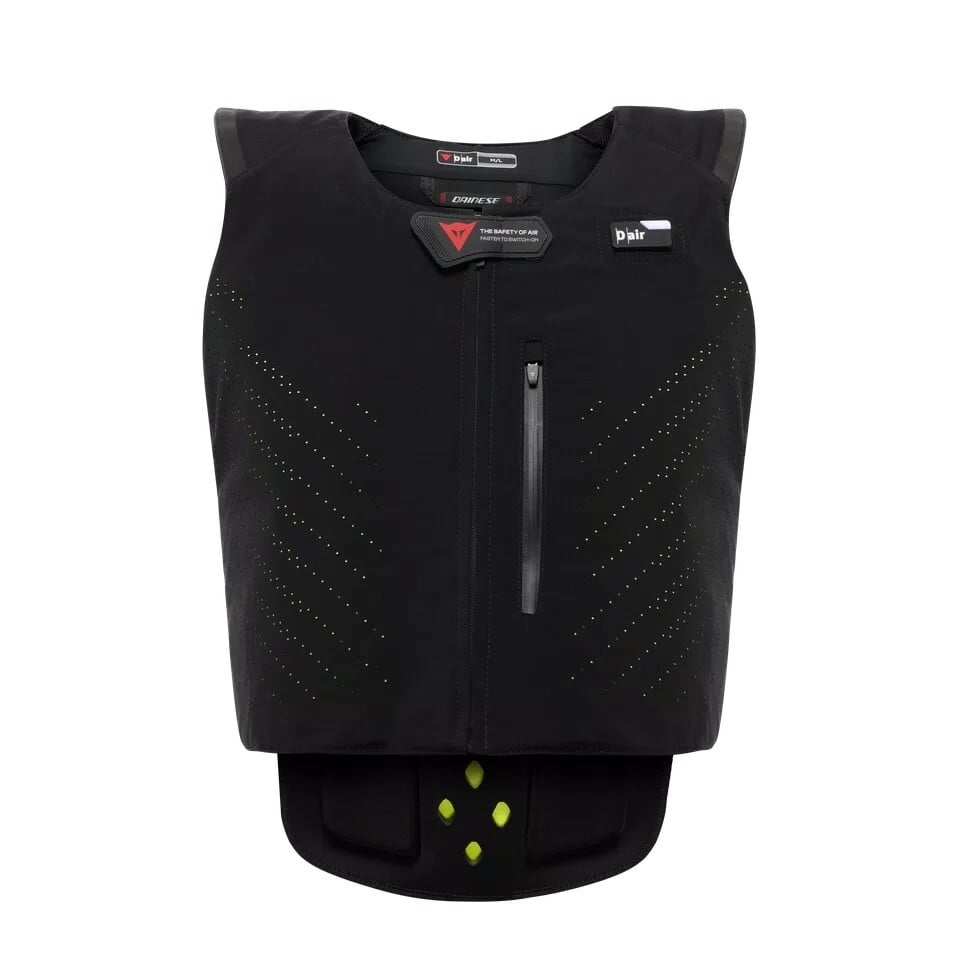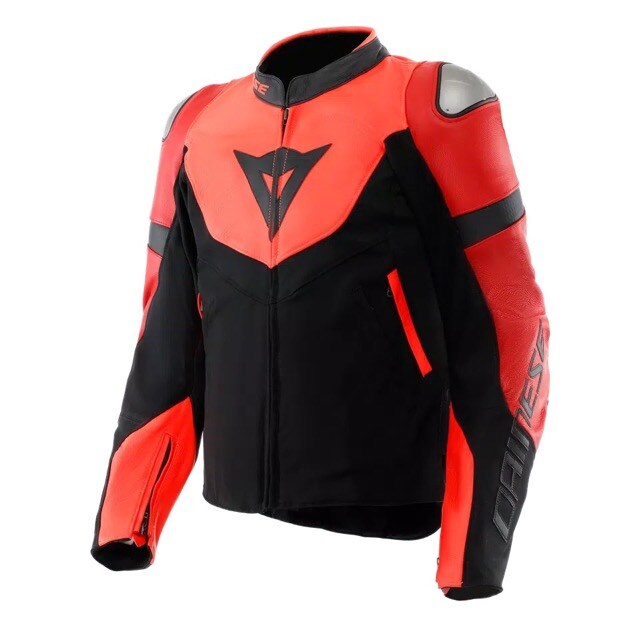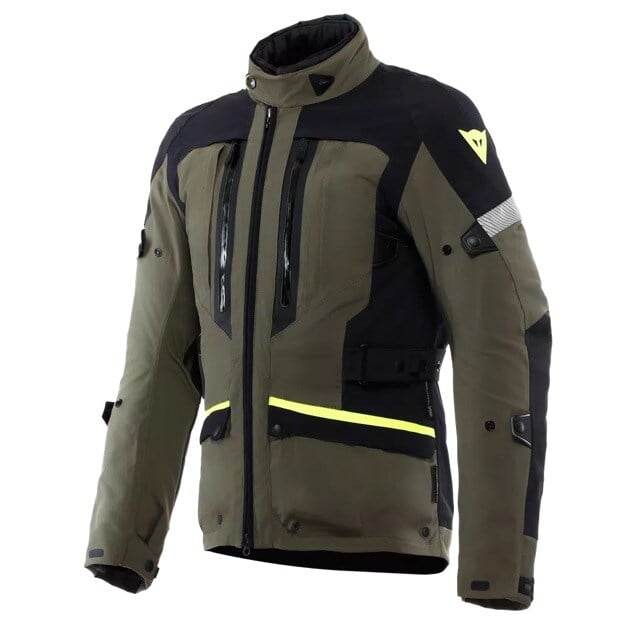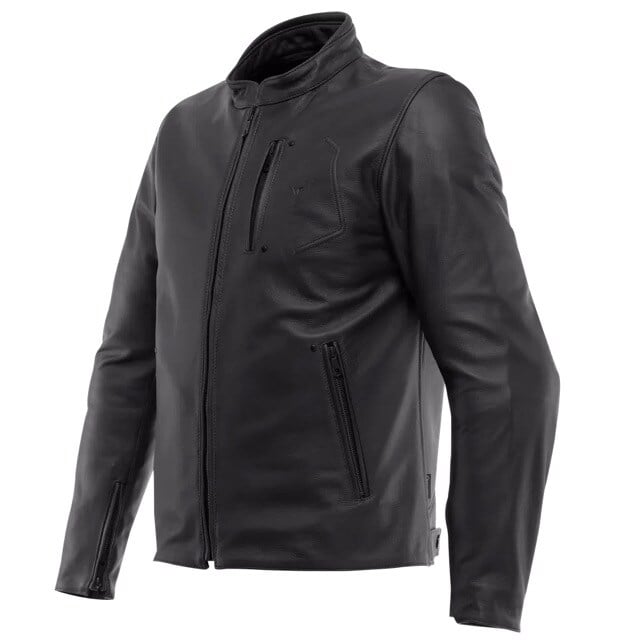If you wear Smart Air, do you still need a back protector?
The Dainese Smart Air airbag can completely replace back and chest protectors, guaranteeing impact absorption comparable to that of seven level 1 rigid back protectors. If the rider wants to use the system together with a back protector, so that the rider’s protection is always guaranteed, even if they have to ride home after an activation, there’s no reason not to.
What happens after an activation? Does it deflate? How long does it take?
To meet the certification requirements, the airbag must remain at a minimum protective pressure for at least five seconds to ensure the protection time is long enough. The airbag then gradually deflates independently immediately afterward. The pressure reduction time depends on a number of factors like, for example, the volume of the airbag itself. On average, the airbag of a Dainese D-air® system begins to lose pressure between 30 (Racing airbags, integrated with D-air® suits) and 60 seconds (Street airbags, integrated with jackets and vests).
What do I have to do next to be able to use it again?
For the latest-generation airbags, found on the Mugello 3 D-air® and Misano 3 D-air® suits and in the new Smart Air, after activation you only need to replace the used gas generator, completely independently and without the need to intervene on the electronic control unit. We recommend that you check your garment thoroughly in order to rule out the presence of any physical damage to the airbag.
On the third activation, the system locks. At this point you’ll have to send your garment to the service department to replace the airbag and reset the control unit.


